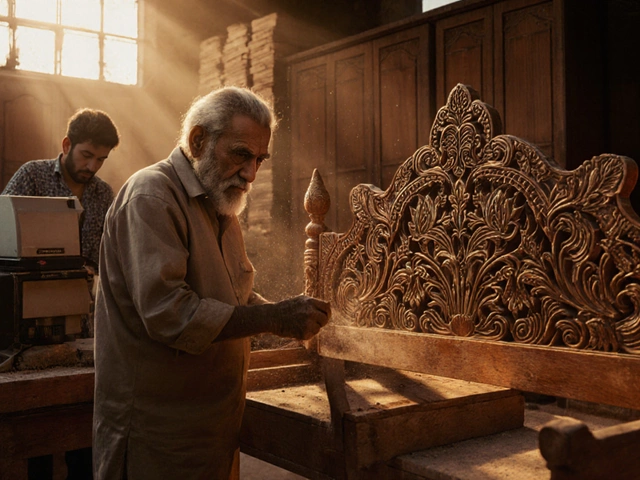Best Types of Wood for Sofas in India: Your Ultimate Guide
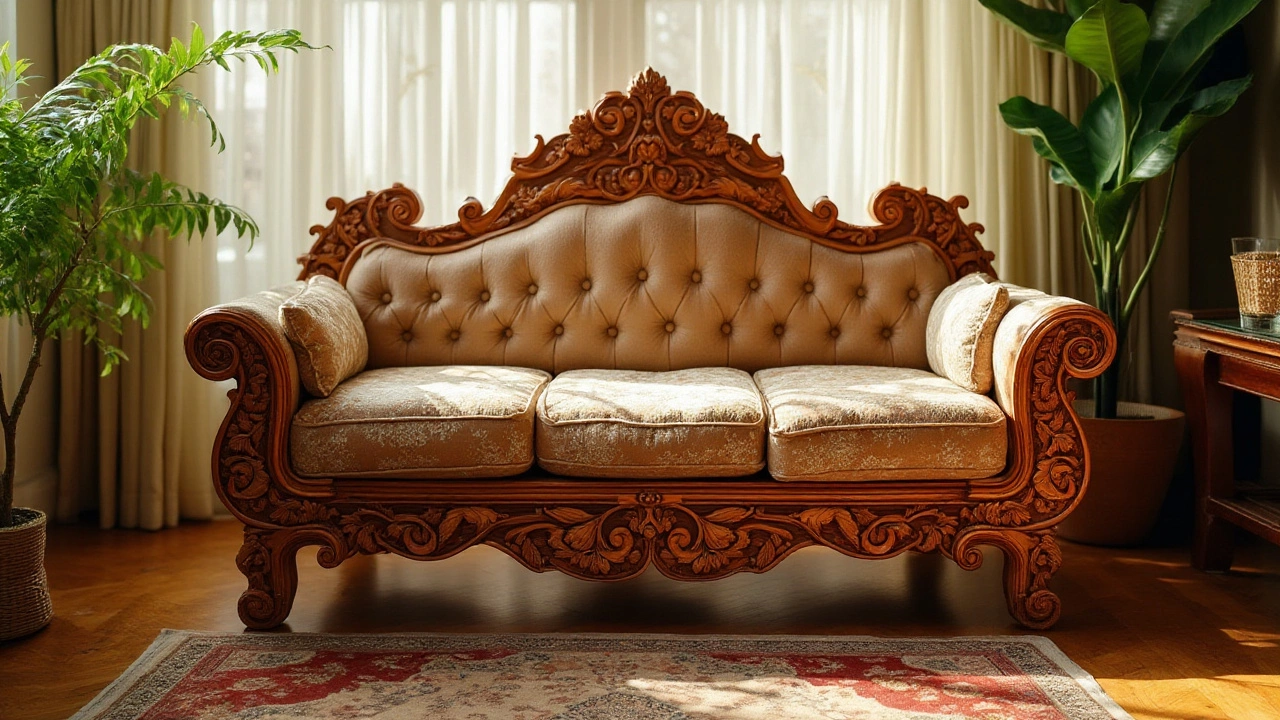
When it comes to selecting the perfect wood for your sofa in India, the choices might seem overwhelming at first. The rich diversity of wood available combines aesthetics with functionality, offering a range of options suitable for various tastes and needs.
In this landscape, some woods have gained prominence for their unmatched qualities. From the golden-hued Teak to the richly grained Sheesham, each kind of wood promises something unique. Whether it's the age-old charm of Rosewood or the resilient nature of Sal wood, understanding their properties can help you make the right choice for your home.
This article delves into the most favored wood types, examining their strengths and beauty. It also shares essential tips to ensure your sofa remains in impeccable condition throughout the years. Understanding the characteristics of different woods can aid in crafting furniture that is not only aesthetically pleasing but also tailored to withstand the climate and lifestyle of your household.
Popular Wood Types
Understanding the options available when choosing wood for your sofa in India is essential. Among the variety of woods, Teak, Sheesham, Sal, and Rosewood stand out. These woods are well-loved for their durability, aesthetics, and strength. Let's start with Teak, often considered the gold standard in furniture making. It's known not only for its rich golden color but also for its high oil content which gives it a significant resistance to termites and pests. This feature makes Teak a practical choice for Indian homes, particularly in humid regions. Its strength allows for furniture pieces that can last several generations with proper care.
Teak Wood
In addition to its beauty and durability, Teak is prized for its ability to resist water and decay, making it perfect for both indoor and outdoor furniture. The wood ages gracefully, developing a beautiful silvery patina over time, which adds an heirloom quality to any sofa. While Teak can be more expensive than other options, its longevity makes it a worthwhile investment. According to a report by the Forest Research Institute, the natural oils in Teak significantly reduce maintenance needs over its lifespan.Sheesham Wood
Next up is Sheesham, also known as Indian Rosewood. It's a favorite for its distinctive grain patterns, offering a depth of color that is hard to match. Sheesham is robust, though slightly softer than Teak, which allows for intricate carvings and detailed craftsmanship. This makes it popular for ornate furniture that also stands up well to everyday use. Its versatility and reduced cost compared to Teak make it an attractive option for many homeowners.Beyond aesthetics, Sheesham's strength lies in its adaptability. The wood responds well to finishes, which enhances its natural beauty and provides some degree of protection. Many craftsmen in India prefer Sheesham for its ease of workability, which allows them to create both traditional and contemporary designs that appeal to diverse tastes. In the words of renowned Indian designer Sabyasachi Mukherjee, "Sheesham holds a legacy of craftsmanship that is unparalleled in the world of furniture making."
Sal Wood
Moving on, Sal wood is another strong contender known for its rugged strength and resistance to decay and water. This wood type is often used in construction due to its tough nature, which makes it an excellent choice for sofas expected to bear heavy use. Sal wood’s density provides a firm base that ensures sofas retain their shape and structure even after years of use.Though not quite as elegant in grain as Teak or Sheesham, Sal wood’s utilitarian appeal and lower cost are attractive to those prioritizing function over form. A point to consider, though, is the weight of the furniture, as Sal wood can be substantially heavy, which might not suit every household.
Rosewood
Lastly, Rosewood, often cherished for its rich hues ranging from dark brown to reddish tones, is prized for making luxurious, high-end furniture. Its distinct fragrance and unique color make it a favorable choice for those looking to add elegance to their living spaces. However, Rosewood can be challenging to source sustainably, prompting buyers to ensure their wood is ethically sourced. Its status as a premium wood often reflects in the cost, but for many, the beauty it brings justifies the investment."Furniture crafted from Indian Rosewood not only represents the culture but also showcases timeless elegance," notes the All India Furniture Manufacturers & Traders Association, highlighting why this wood remains in high demand.
Each of these wood types offers something unique, and the choice largely depends on your specific needs, whether they are budget constraints, desired aesthetics, or expected durability. With careful consideration, choosing the right wood can lead to a sofa that not only matches your home decor but also stands the test of time.
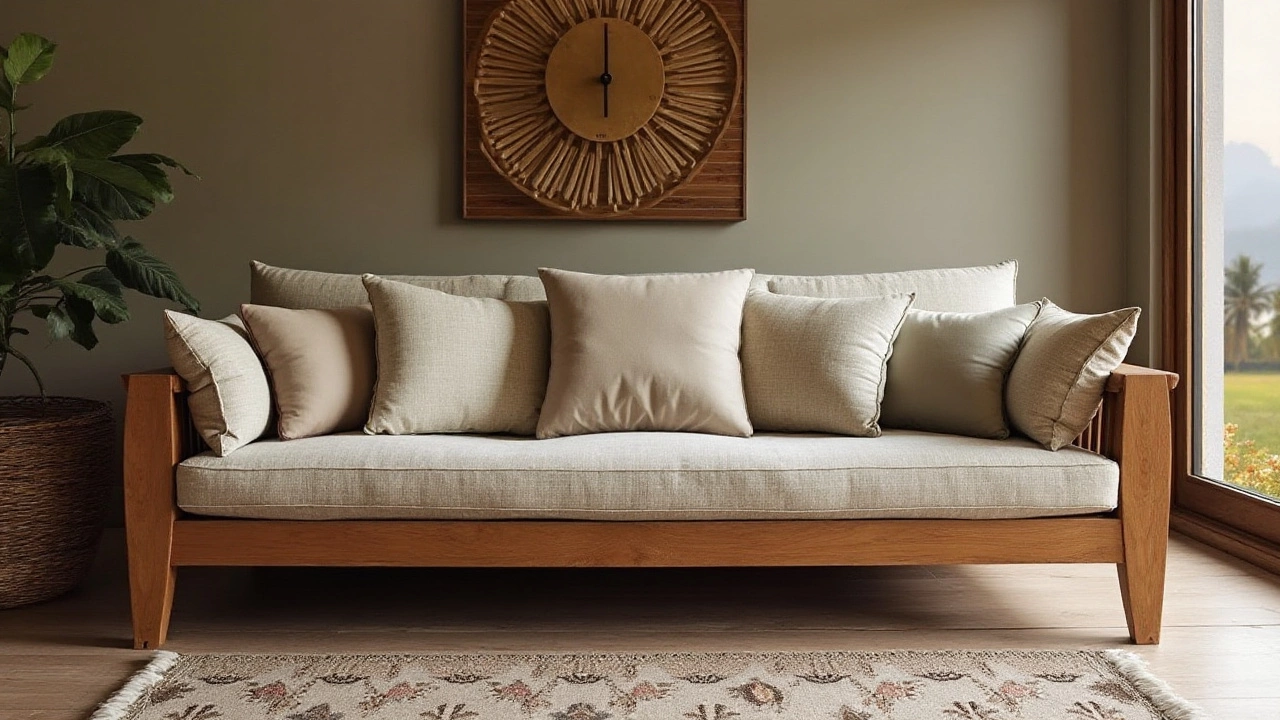
Durability and Strength
When considering wood for a sofa, two qualities reign supreme: durability and strength. These factors ensure that the furniture withstands not only the test of time but also the rigors of daily use. In India, climate variations — from the humid coasts to dryer interiors — demand wood that can handle different levels of moisture without warping or degrading. Teak wood, known for its high oil content, naturally resists water and pests, making it a popular choice for sofa wood types India. Its dense grain and robustness allow it to hold up well under pressure, preventing any warping or sagging over years of use.
The Resilience of Sheesham
Sheesham, another excellent contender, showcases remarkable resilience. The distinctive reddish-brown texture of Sheesham is not just about looks; it's a testament to the wood's inherent strength. It's less prone to cracking or splintering, a feature which even motivates furniture enthusiasts to choose it for intricate carvings without fearing breakage. If you ever have the chance to consult with veteran artisans, they will often favor Sheesham for its durability, which is due in part to its medium-fine texture that resists insect attacks and natural decay. This makes Sheesham a strong competitor to teak, especially for those seeking an elegant, yet durable finish."Teak and Sheesham are both premier choices for furniture builders who want timeless, high-quality pieces,” says Raghav Bansal, a seasoned furniture maker from Rajasthan.
Meanwhile, Sal wood, a staple across India, brings its own toughness to the table. It's not as aesthetic as Teak or Sheesham, but its iron-like strength means that it can bear quite a beating. Sal wood is often chosen for structures intended to last decades, and when used in sofas, it offers a sturdiness that far surpasses other conventional options. Its strength lies in its extreme hardness and ability to withstand adverse conditions, making it particularly suitable for heavy-duty furniture and environments with high wear and tear.
Picking the Right Wood
In order to pick the right best wood for sofa, it’s essential to weigh the durability against the intended use and style of the furniture. For families with children or homes with high activity levels, prioritizing sturdiness over aesthetics might be wise. Durable woods like Teak, Sheesham, and Sal offer not just a robust frame, but peace of mind for those worried about long-term investment. It’s these qualities that often resonate with families, providing furniture that can be cherished for generations, holding stories in every scratch and bump.| Wood Type | Durability Rating |
|---|---|
| Teak | High |
| Sheesham | High |
| Sal | Very High |
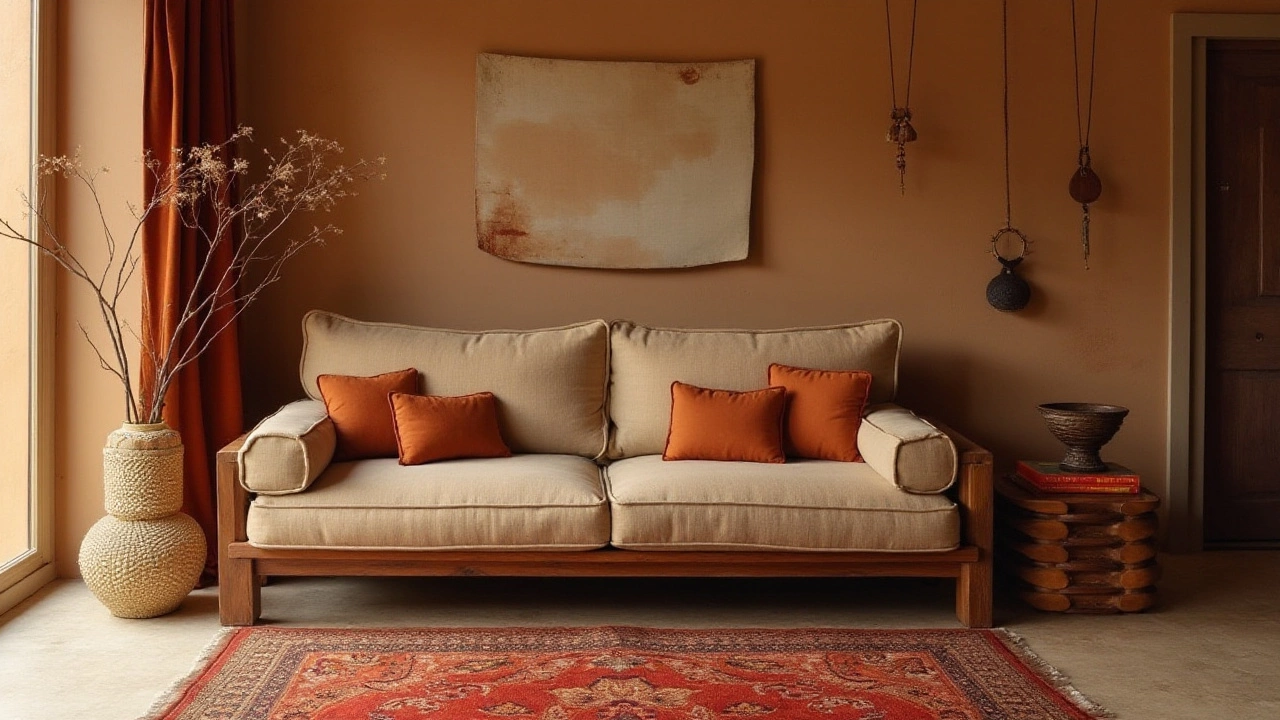
Aesthetic Appeal
When it comes to crafting the perfect sofa wood types India, aesthetics is a major consideration that cannot be overlooked. The visual allure of wood, with its diverse grains and colors, can significantly impact the atmosphere of any room. Different woods offer an array of hues and finishes that cater to everything from minimalist designs to classic elegance. Take Teak, for example, which is famed for its golden-brown hue that deepens with age, creating a warm and welcoming environment. Its natural oil content gives it a shiny finish, sometimes needing no extra varnish at all, thus making it a go-to choice for those seeking a rustic yet elegant look.
On the other hand, Sheesham wood, also known as Indian Rosewood, stands as a testament to natural beauty with its intricate grain patterns. Its rich tones range from golden brown to deep reddish-browns, making every piece unique. This variety is often favored for crafting contemporary pieces that demand a bold statement in any living space. The charm of Sheesham lies in its innate ability to complement both modern and traditional decor styles. Those looking for a versatile option may find Sheesham as the perfect medium to bridge different design elements in their home.
For those who prefer a more traditional look, Oak offers a timeless charm. The light-colored wood is appreciated for its straight grain and coarse texture, making it ideal for vintage or farmhouse-style furniture. While not as common in India as Teak or Sheesham, Oak furniture evokes a sense of nostalgia and homeliness that few other woods can match.
“Wood is universally beautiful to man. It is the most humanly intimate of all materials.” – Frank Lloyd WrightSal wood, often used in construction, also finds its place in the furniture sector, especially in pieces that require strength along with style. Its neutral tones make it a blank canvas, easily adaptable to different finishes and colors. This quality makes Sal a popular choice for those who want a sleek and unobtrusive foundation for their furniture which they can adapt and personalize over time.
The choice of wood often comes down to personal preference and the existing decor of one's home. While design trends can influence decisions, the long-lasting appeal of well-chosen wood can set the tone for an entire living space. Durable sofa wood options don't just promise longevity but also carry their distinct character and charm, which enhance the aesthetic appeal of sofas and the rooms they occupy. Investing in quality wood is not just about durability—it's about imbuing your living spaces with warmth, character, and a touch of history.
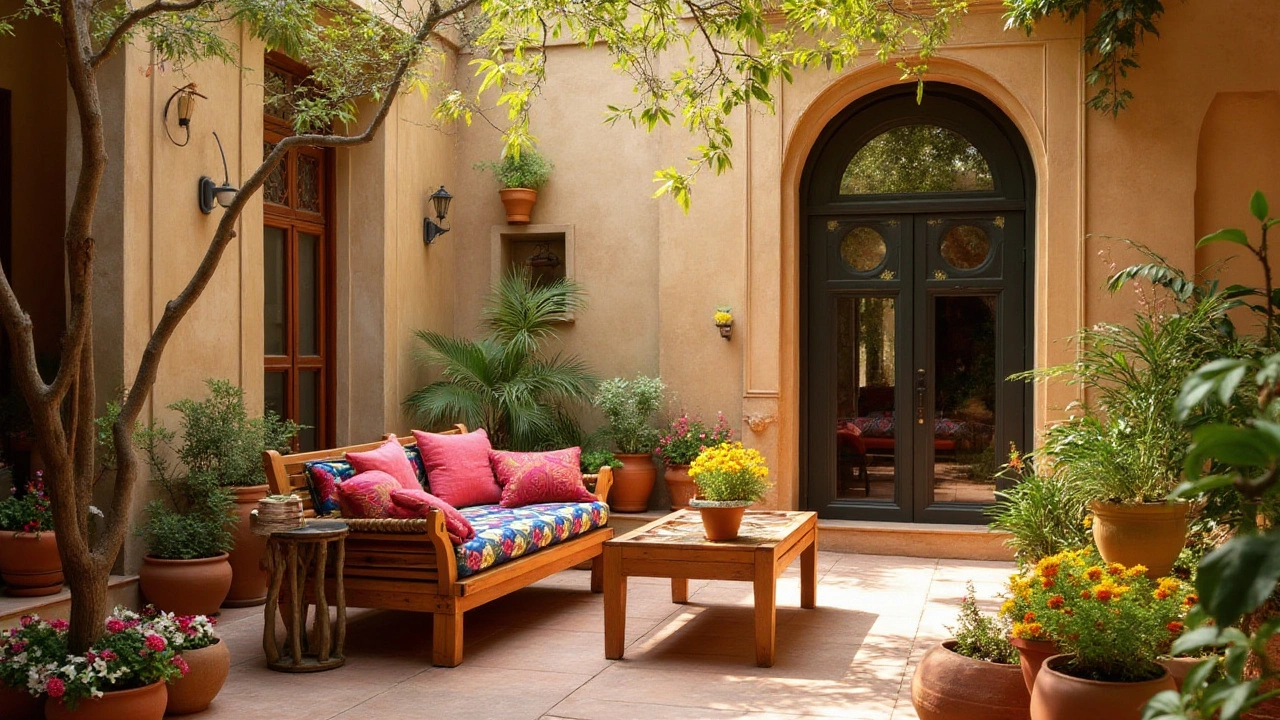
Maintenance Tips
When it comes to keeping your sofa's wood in pristine condition, maintenance is key. India’s climate can range from humid coastal areas to dry, arid regions, which affect different wood types in varied ways. Alongside this, routine care and preventive measures can extend the lifespan and visual appeal of your wooden furniture. Making a simple cleaning routine part of your schedule can prevent dust accumulation and surface damage. Regular dusting with a soft, dry cloth is advisable to prevent the buildup of particles that can scratch the wood surface over time. For more thorough cleaning, slightly dampen the cloth but ensure it's dry to the touch to avoid moisture damage.
Humidity levels play a significant role in wood maintenance, especially in areas where fluctuations are common. Wood naturally expands or contracts with changes in humidity, which can cause warping or cracking. Maintaining a stable environment by using humidifiers or dehumidifiers can safeguard your sofa wood. In humid regions, placing silica gel packs in the crevices of your wooden sofa can absorb excess moisture, preventing mold or mildew growth. Similarly, placing your sofa away from direct sunlight is crucial. Constant exposure to UV rays can lead to the bleaching of rich wood tones and weaken the wood’s structure over time.
Polishing and Protective Coatings
An essential part of wooden sofa maintenance is applying the right polish or protective coating. Not only do these products enhance the natural sheen of the wood, but they also form a protective barrier against scratches and spills. Experts often recommend oils like linseed or Danish oil for teak wood due to its high oil content, which complements the wood's natural properties. Quarterly polish applications can keep the wood nourished and smooth, while specialized waxes can be rubbed into the surface to add a durable finish layer, offering extra protection from daily wear.
"The appropriate care for your wood furniture reflects not just on its longevity, but also in the preservation of its natural beauty," says Guruprasad Mohanty, a renowned furniture expert in Mumbai.Warm water mixed with mild dish soap can be used occasionally for a deeper clean. Afterward, ensure the surface is wiped dry to prevent any moisture from sitting too long.
Repairing Minor Damages
Inevitable as life can be, small dings and scratches may occur with daily use. Addressing these blemishes promptly can prevent them from marring the wood’s appearance. Use a matching wood polish crayon to fill in light scratches; these are available at most home improvement stores. For deeper dents, consider using steam to raise the wood fibers. All you need is a damp cloth and a hot iron. Place the cloth over the indent and apply the iron briefly, which can often draw out the dent, followed by refinishing with polish or wax to seal it.
Remember, consistent attention to your wooden sofa using these tips can make a profound difference in its condition. Not only will it retain its structural integrity, but also its aesthetic appeal, offering you decades of continued use. Practicing mindful maintenance ensures that the elegance of your sofa’s wood serves not only as functional furniture but also as a cherished home feature for years to come.




